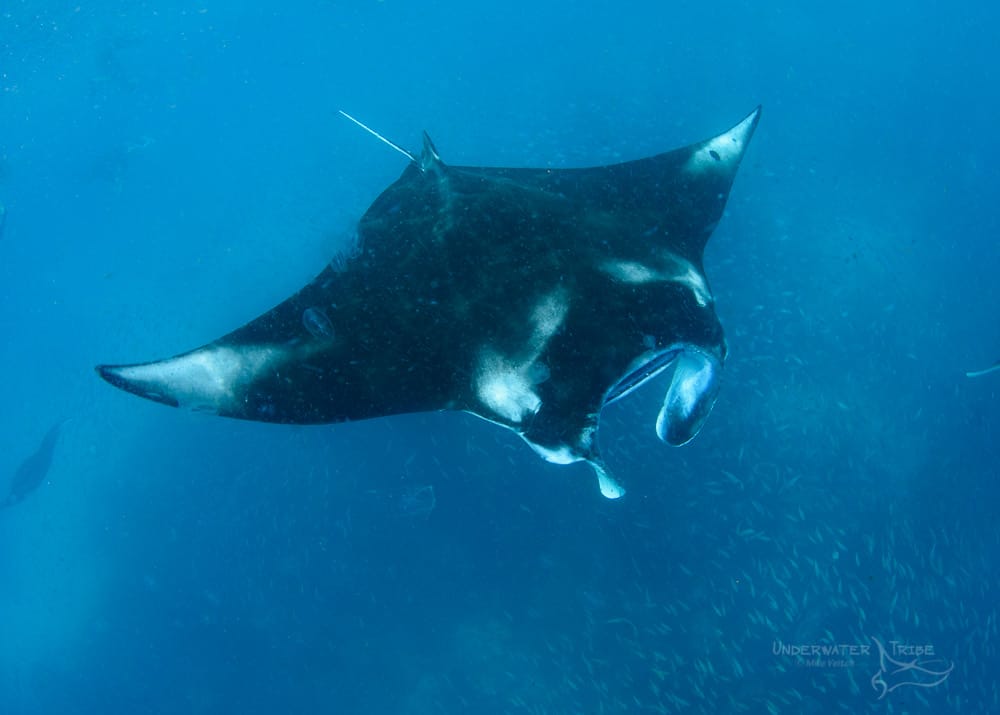

As a bonus, you can also encounter schools of mobula rays feeding on baitfish early in the season around Misool. Further south around Misool you can spot both species at Magic Mountain, as well as at other cleaning stations. The northern reaches around the Dampier Strait have several renowned cleaning stations as well as the famous Blue Magic - a site well known for oceanic rays. There are several well known hotspots for manta rays throughout the park. And with over forty thousand square kilometres of land and sea to explore, your options are almost limitless! Raja Ampat is the only destination on our list to boast close encounters with both reef and giant oceanic mantas, depending on where and when you’re diving. This legendary marine park and UNESCO world heritage site is home to over 1500 islands ringed by spectacular coral reefs.

You’re also likely to spot mantas queued up at the island’s numerous cleaning stations, patiently waiting their turn to be picked clean of parasites. This island is home to the legendary dive site Manta Point, where dozens of these friendly oceanic acrobats can be seen cruising in the current. Hundreds of species of hard and soft coral are found here, creating a stunning backdrop for manta encounters and adding depth to wide-angle photography. Nusa Penida is home to stunning reef ecosystems, absolutely swarming with fish. A day trip from Bali, Nusa Penida’s southwest coast is normally combined with diving around its neighbouring island, Nusa Lembongan. This current-swept island is famous for its fast-paced drift dives and seasonal mola mola sightings, and it’s one of the world’s most reliable places to dive with reef manta rays year round.
#REEF MANTAS FULL#
When to visit - For full-on manta madness, plan your trip during the peak between July and October, ideally during the full or new moon.Hanifaru can be visited via a liveaboard safari or day trip, and manta activity boasts a surprisingly long season, running from May through December.

As Hanifaru’s tides filter in and out of the bay, they bring high concentrations of these microorganisms close to the surface where spiralling cyclones of mantas form, all feeding on the bounty created by this uniquely-shaped reef. During these incredible feasting events, hundreds of graceful filter feeders gather to dine on their favourite dish, plankton. Hanifaru Bay is one of the world’s only places where reef mantas can be seen performing their rare cyclone feeding behaviour. And, by happy coincidence, its unique and breathtaking aggregation is perfectly timed for celebrating World Manta Day! This UNESCO World Biosphere Reserve is home to one of the most spectacular gatherings of reef manta rays in the world.


 0 kommentar(er)
0 kommentar(er)
